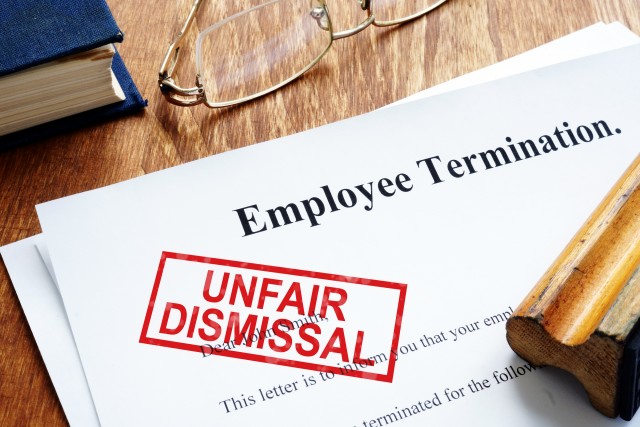
Dismissing Staff Within 2 Years
Navigating the complex world of employment law can be challenging for employers, business owners, and managers, especially when it comes to the delicate issue of dismissing staff within 2 years of employment. Knowing the legal framework surrounding dismissals is essential to ensure you’re acting fairly, ethically, and within the boundaries of the law. This comprehensive guide will help you understand the key aspects of dismissing staff within the first two years, empowering you to make well-informed decisions while minimizing potential legal risks.
In this blog post, we’ll delve into the legal background of UK employment law, explore the two-year qualifying period, discuss fair reasons for dismissing staff within 2 years, and outline the key steps in the dismissal process. We’ll also cover special circumstances, avoiding unlawful discrimination, redundancy, and when to seek legal advice. Our goal is to provide you with an engaging, friendly, and trustworthy resource, so you can confidently handle the dismissal process while maintaining a positive work environment.
Legal Background of Employment Law
Before diving into the specifics of dismissing staff within 2 two years it’s crucial to have a basic understanding of UK employment law and its applicability. The primary piece of legislation governing employment relationships in the UK is the Employment Rights Act 1996 (ERA). The ERA covers various aspects of employment including unfair dismissal, redundancy, and other employment rights.
In addition to the ERA the Equality Act 2010 plays a significant role in ensuring fairness and equality within the workplace. This legislation protects employees from discrimination based on protected characteristics such as age, disability, gender reassignment, marriage and civil partnership, pregnancy and maternity, race, religion or belief, sex, and sexual orientation.
As an employer, it’s important to familiarize yourself with both the ERA and the Equality Act to ensure that your dismissal decisions are compliant with the law. Failure to adhere to these regulations can result in costly legal disputes, reputational damage, and a negative impact on your workplace culture.
The Two-Year Rule: Understanding Qualifying Periods
A crucial aspect of employment law that employers must be aware of is the two-year qualifying period. In the UK, employees generally need to complete a continuous period of two years’ service with their employer before they can bring a claim for unfair dismissal. The two-year rule is designed to strike a balance between providing employees with job security and allowing employers the flexibility to manage their workforce.
However, there are exceptions to the two-year rule. Some dismissal reasons are considered “automatically unfair,” meaning that employees can bring a claim for unfair dismissal without needing to meet the two-year qualifying period. Some examples of automatically unfair dismissal reasons include:
Whistleblowing: Dismissing an employee for making a protected disclosure, such as reporting fraud, health and safety concerns, or other legal breaches, is automatically unfair.
Discrimination: If an employee is dismissed for reasons related to a protected characteristic under the Equality Act 2010, the dismissal will be considered automatically unfair, and the employee will not need to have completed the two-year qualifying period.
Asserting a statutory right: Dismissing staff within 2 years for asserting a statutory employment right, such as taking maternity leave or requesting minimum wage, is also considered automatically unfair.
As an employer, it’s essential to be aware of these exceptions and ensure that any dismissal decision is based on a fair reason.
Fair Reasons for Dismissing staff within 2 years
When considering dismissing an employee within 2 two years, it’s important to ensure that the reason for dismissal is fair and justifiable. UK employment law identifies five potentially fair reasons for dismissal:
Capability: Refers to an employee’s ability to perform their job. This may be impacted by their skills, qualifications, or health. If an employee is povided with adequate support and still dosen’t meet the standards then dismissal on capability grounds may be considered fair.
Conduct: Dismissal may be warranted if an employee engages in misconduct or demonstrates a pattern of poor behaviour, such as frequent tardiness, dishonesty, or harassment.
Redundancy: If an employee’s position is no longer required due to a business reorganization, closure, or a reduction in workforce, dismissal on redundancy grounds may be considered fair.
Statutory restriction: Dismissal may be fair if continuing to employ the individual would breach a statutory restriction, such as employing someone without the right to work in the UK.
Some Other Substantial Reason (SOSR): This category covers other legitimate reasons for dismissal that don’t fall under the previous four categories, such as a breakdown in the working relationship or a change in business circumstances.
The Importance of a Fair Dismissal Procedure
Even if you have a fair reason for dismissal, it’s crucial to follow a transparent and fair dismissal process to minimize potential legal risks. The ACAS Code of Practice on Disciplinary and Grievance Procedures provides guidelines for employers on how to handle disciplinary situations, including dismissals.
By following the ACAS Code of Practice, you’ll demonstrate that you’ve acted reasonably and fairly throughout the dismissal process. This can help protect your business from legal disputes and maintain a positive work environment.
Key principles of a fair dismissal procedure include:
Conducting a thorough investigation to gather all relevant facts
Informing the employee of the issue in writing
Holding a formal meeting with the employee to discuss the issue
Allowing the employee to be accompanied by a colleague or trade union representative
Providing the employee with a right to appeal the decision
Failing to follow a fair dismissal procedure may result in an employee claiming that their dismissal was procedurally unfair, even if the reason for dismissal was valid.
Key Steps in the Dismissal Process
Understanding and implementing the key steps in the dismissal process is crucial to ensuring a fair and legally compliant outcome. Here are the main steps you should follow:
Investigate the situation thoroughly:
Before making any decisions gather all relevant information about the issue, speak to witnesses if necessary, and review any relevant documentation. This will help you make an informed decision about whether dismissal is justified.
Hold a formal meeting with the employee:
Arrange a formal meeting to discuss the issue with the employee giving them reasonable notice and providing them with details of the allegations. During the meeting allow the employee to present their side of the story and consider any mitigating factors.
Provide a written notice of dismissal:
If you decide to proceed with the dismissal, provide the employee with a written notice that clearly outlines the reasons for dismissal and any applicable notice period.
Allow the employee to appeal the decision:
Give the employee the opportunity to appeal your decision, ideally to a more senior manager who is not involved in the original decision-making process. Ensure that the appeal process is fair, unbiased, and conducted in a timely manner.
Maintain clear documentation throughout the process:
Keep detailed records of each step in the dismissal process, including investigation notes, meeting minutes, and written communications. This documentation can be crucial in the event of a legal dispute or if you need to justify your decision to other stakeholders.
By following these steps, you’ll demonstrate that you’ve acted fairly and reasonably throughout the dismissal process. This can help protect your business from potential legal disputes, maintain employee morale, and preserve your reputation as a responsible employer.
Remember, every dismissal case is unique, and it’s essential to tailor your approach to the specific circumstances. Stay informed about your legal obligations and be mindful of the principles of fairness and due process. You will then be better equipped to handle the challenging task of dismissing staff within 2 years of employment.
Dealing with Special Circumstances
During the dismissal process, employers may encounter special circumstances that require additional care and attention. Some common special circumstances include:
Dismissing employees on probation:
While employees on probation typically have fewer rights, it’s still essential to follow a fair and transparent dismissal process. Ensure that you’ve clearly communicated performance expectations and given the employee a chance to improve before considering dismissal.
Dismissing staff for long-term sickness absence:
Dismissing an employee due to long-term illness can be a complex process, and you must consider disability discrimination issues. Before dismissal, explore all reasonable adjustments and alternatives, such as offering a phased return to work or reduced hours.
Handling dismissal in cases of gross misconduct:
Gross misconduct, such as theft or violence, may warrant immediate dismissal without notice. However, it’s crucial to carry out a thorough investigation and follow a fair dismissal procedure to ensure the decision is legally defensible.
Dismissing employees with a fixed-term contract:
Employers must still follow a fair dismissal process and avoid discriminating against fixed-term employees when a fixed-term contract ends.
Avoiding Unlawful Discrimination
To ensure your dismissal process is fair and compliant with UK employment law, it’s crucial to avoid discrimination based on protected characteristics under the Equality Act 2010. To prevent unlawful discrimination during the dismissal process:
Ensure that your decision to dismiss is based on a fair reason, and not on any protected characteristic.
Apply the same dismissal criteria and process to all employees, regardless of their protected characteristics.
Train managers and decision-makers on the importance of avoiding discrimination during the dismissal process and provide them with guidance on recognizing and addressing potential bias.
Regularly review your dismissal processes and policies to ensure they remain up to date and compliant with the Equality Act.
By taking these steps, you can minimize the risk of discrimination claims and create a more inclusive and supportive work environment.
Redundancy of Staff Within 2 Years
Redundancy can be a fair reason for dismissal, but it’s important to follow the appropriate legal requirements when dismissing employees within their first two years on redundancy grounds. Here are some key aspects to consider:
Genuine redundancy situation:
Ensure that the redundancy is genuine, meaning that the employee’s job no longer exists due to a business reorganization, closure, or reduction in the workforce.
Objective selection criteria:
Develop clear and objective criteria for selecting employees for redundancy, such as skills, qualifications, or performance. Avoid using criteria that could be discriminatory or subjective.
Consultation:
Although there is no statutory requirement to consult with employees who have less than two years of service, it’s still good practice to involve them in the redundancy process. Discuss the reasons for the redundancy, any alternatives to dismissal, and the selection criteria used.
Notice and pay:
Provide the employee with the appropriate notice period or payment in lieu of notice. Any contractual or statutory redundancy pay that they may be entitled to is based on their length of service and other factors.
By adhering to these guidelines, you can help ensure that your redundancy dismissals are fair and legally compliant, even for employees within their first two years of service.
When to Seek Legal Advice
While this guide provides a general overview of the key aspects of dismissing staff within 2 years of employment, it’s important to recognize that every situation is unique, and the specific circumstances may require additional guidance. Also, in complex or high-risk dismissal situations, it’s highly recommended that you consult with an experienced employment lawyer so that your actions are legally compliant because you minimize the risk of potential disputes.
Some situations in which you might consider seeking legal advice include:
Dismissing an employee who has a protected characteristic under the Equality Act 2010
Dismissing an employee who has made a whistleblowing disclosure
Dealing with a contentious or high-profile dismissal
Navigating the dismissal process for an employee with a disability or long-term illness
When seeking legal advice choose an experienced employment lawyer who understands the nuances of UK employment law and has a track record of successfully advising employers in similar situations.
Conclusion:
Dismissing staff within 2 years of employment can be a challenging and delicate process for employers, business owners, and managers. By understanding the legal framework surrounding dismissals, recognizing fair reasons for dismissal, and following a transparent and fair dismissal process, you can make well-informed decisions that protect your business from potential legal disputes and maintain a positive work environment.
Always remember that educating yourself on employment law and seeking professional advice when needed can be invaluable in ensuring a legally compliant and successful dismissal process. We hope this guide has provided you with the information and confidence you need to navigate the dismissal process within the first two years of employment. If you have any questions please contact EBS Law.
Call John Bloor at EBS Law on 01625 87 4400 if you are an employer and need free Employment Law Advice.





